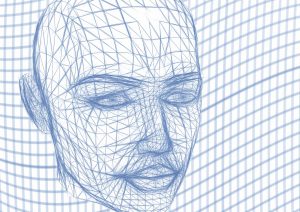Brain injuries are complex and can have profound effects on individuals’ lives. Whether caused by traumatic incidents like accidents or non-traumatic events such as strokes or tumors, the journey to recovery can be arduous and challenging. However, with the right approach and support, significant progress can be made. This article explores the intricacies of recovering from a brain injury, from understanding the injury itself to the multidisciplinary strategies involved in rehabilitation.
Understanding Brain Injuries
Brain injuries encompass a wide range of conditions, including traumatic brain injury (TBI) and acquired brain injury (ABI). TBIs typically result from external forces such as falls, vehicle accidents, or assaults, while ABIs occur due to internal factors like strokes, infections, or oxygen deprivation. Regardless of the cause, the effects can be devastating, and even fatal. According to a study on brain injury statistics, there were over 69,000 TBI-related deaths in the United States in 2021.
Understanding the specific type of brain injury and its underlying mechanisms is essential for tailoring treatment and rehabilitation plans. TBIs, for example, often involve direct impact to the head, leading to focal injuries such as contusions or diffuse injuries such as diffuse axonal injury (DAI). ABIs, on the other hand, may result from disruptions in blood flow to the brain, causing ischemic or hemorrhagic damage. Each type of injury presents unique challenges and requires specialized care.
Diagnosis and Initial Treatment
Recognizing the symptoms of a brain injury is crucial for timely intervention. Symptoms can vary widely depending on the type and severity of the injury but may include headache, confusion, nausea, dizziness, loss of consciousness, memory problems, and changes in mood or behavior. Diagnostic procedures such as computed tomography (CT) scans, magnetic resonance imaging (MRI), and neurological assessments help healthcare professionals assess the extent of the injury and formulate appropriate treatment plans.
In the acute phase, immediate medical care focuses on stabilizing the patient and preventing further damage. This may involve interventions to control bleeding, reduce swelling, and maintain adequate oxygenation and blood flow to the brain. In severe cases, surgical procedures such as craniotomy or decompressive craniectomy may be necessary to relieve pressure on the brain. Throughout the acute phase, close monitoring in intensive care units allows for timely adjustments to treatment and interventions as needed.
A multidisciplinary team of specialists, including neurologists, neurosurgeons, critical care physicians, nurses, and rehabilitation therapists, collaborate to provide comprehensive care. Early involvement of rehabilitation professionals, such as physical therapists, occupational therapists, speech therapists, and neuropsychologists, is essential for optimizing outcomes and facilitating the transition to the next phase of recovery.
Phases of Recovery
The recovery process typically unfolds in three phases: acute, subacute, and chronic. During the acute phase, patients often require intensive care in hospital settings. The primary goals of this phase are to stabilize the patient, prevent secondary complications, and initiate early interventions to promote recovery. This may involve monitoring vital signs, managing pain and discomfort, providing nutritional support, and implementing therapies to prevent complications such as muscle weakness, contractures, and pressure ulcers.
As patients progress to the subacute phase, they transition to specialized rehabilitation facilities where they receive focused therapy to regain lost functions and maximize independence. Rehabilitation programs are tailored to the individual needs of each patient and may include physical therapy to improve mobility and strength, occupational therapy to enhance daily living skills and cognitive function, speech therapy to address communication and swallowing difficulties, and neuropsychological therapy to address cognitive and behavioral challenges.
The chronic phase of recovery involves long-term rehabilitation efforts aimed at maintaining and further enhancing functional abilities. This phase may extend for months or even years, depending on the severity of the injury and the individual’s response to treatment. Rehabilitation goals may evolve over time as patients progress and achieve milestones, with an emphasis on promoting community integration, social participation, and quality of life.
Multidisciplinary Approach to Recovery
Rehabilitation involves a holistic approach, addressing physical, cognitive, and emotional aspects of recovery. Medical interventions such as medications and surgeries may be necessary to manage symptoms and complications. Pharmacological interventions may include medications to control pain, reduce spasticity, manage seizures, improve attention and concentration, and stabilize mood and behavior.
Rehabilitation therapies play a vital role in restoring function and maximizing independence. Physical therapy focuses on improving mobility, strength, balance, and coordination through exercises, manual techniques, and assistive devices. Occupational therapy helps individuals regain and develop skills for activities of daily living, work, and leisure pursuits, adapting environments and routines as needed to promote independence and safety. Speech therapy addresses communication, language, cognition, and swallowing difficulties, employing a variety of techniques and strategies to improve functional outcomes.
Psychological support is integral to the recovery process, helping individuals cope with the emotional and psychological impact of brain injury. Counseling and therapy provide opportunities for individuals and their families to address adjustment issues, grief and loss, stress management, coping strategies, and interpersonal relationships. Cognitive-behavioral interventions may be used to address specific challenges such as depression, anxiety, impulsivity, irritability, and emotional lability.
Challenges and Complications
Recovering from a brain injury is not without challenges. Physical impairments such as paralysis, weakness, spasticity, ataxia, and balance problems can hinder mobility and limit functional independence. Cognitive deficits such as memory loss, attention deficits, executive dysfunction, and perceptual impairments may impact daily functioning and vocational activities. Communication difficulties such as aphasia, dysarthria, apraxia, and cognitive-communication deficits can affect social interactions, relationships, and community participation. Emotional challenges such as depression, anxiety, mood swings, irritability, emotional lability, and disinhibition can complicate the recovery process and impact overall well-being. Additionally, individuals may face complications such as seizures, hydrocephalus, infections, deep vein thrombosis, pulmonary embolism, contractures, pressure ulcers, heterotopic ossification, and autonomic dysreflexia, necessitating ongoing medical management and interventions.
Strategies for Optimizing Recovery
Setting realistic goals and maintaining consistency are essential for progress. Establishing short-term and long-term goals in collaboration with rehabilitation professionals helps individuals stay motivated and focused on their recovery journey. Breaking goals down into manageable steps and celebrating achievements along the way builds confidence and momentum. Incorporating meaningful activities and interests into daily routines enhances engagement and satisfaction with the rehabilitation process. Engaging in regular physical activity, maintaining a balanced diet, getting adequate rest, managing stress, and avoiding substance abuse promote overall health and well-being.
Leveraging support systems is crucial for navigating the challenges of brain injury recovery. Family members, friends, caregivers, and peers can provide emotional support, encouragement, and practical assistance with daily tasks and activities. Support groups, peer mentoring programs, and online communities offer opportunities for individuals and their families to connect with others who share similar experiences, exchange information and resources, and provide validation, empathy, and inspiration. Seeking assistance from healthcare professionals, rehabilitation specialists, case managers, social workers, vocational counselors, and community agencies facilitates access to services, resources, and accommodations that promote recovery, independence, and community integration.
Promising Advances in Brain Injury Recovery
Advances in medical technology and rehabilitation techniques offer hope for improved outcomes. Emerging therapies such as neurostimulation, neurofeedback, robotic-assisted therapy, virtual reality, tele-rehabilitation, brain-computer interface, exoskeletons, and regenerative medicine show promise in enhancing recovery, restoring function, and improving quality of life. Innovative approaches such as constraint-induced movement therapy (CIMT), mirror therapy, vestibular rehabilitation, cognitive rehabilitation, mindfulness-based interventions, and transcranial magnetic stimulation (TMS) are being explored to address specific impairments and promote neuroplasticity. Personalized rehabilitation programs that incorporate evidence-based practices, individualized interventions, and advanced technologies are tailored to the unique needs, preferences, and goals of each patient.
Ongoing research endeavors continue to deepen our understanding of brain injury mechanisms and identify innovative interventions. Multidisciplinary collaborations between researchers, clinicians, engineers, and industry partners facilitate the translation of scientific discoveries into clinical applications. Longitudinal studies, randomized controlled trials, and systematic reviews provide valuable insights into the efficacy, safety, and cost-effectiveness of interventions across different populations and settings. Biomarkers, imaging techniques, and neuroimaging modalities offer opportunities for early detection, prognostication, and treatment monitoring, paving the way for personalized medicine and precision rehabilitation.
Recovering from a brain injury is a multifaceted process that requires resilience, patience, and support. While the journey may be challenging, advancements in medical care and rehabilitation offer hope for improved outcomes. By understanding the injury, accessing appropriate care, and embracing rehabilitation efforts, individuals can achieve meaningful recovery and rebuild their lives.








